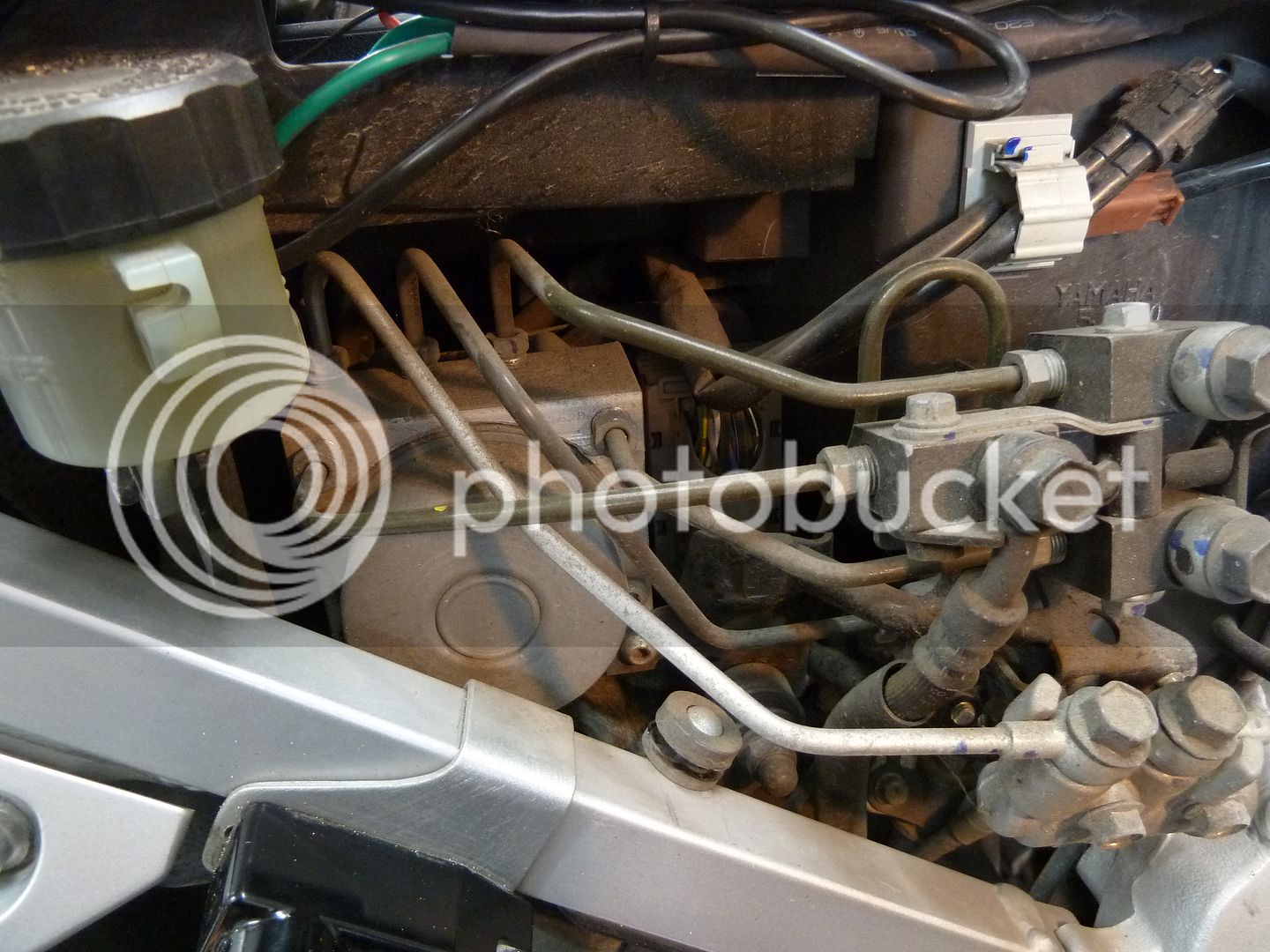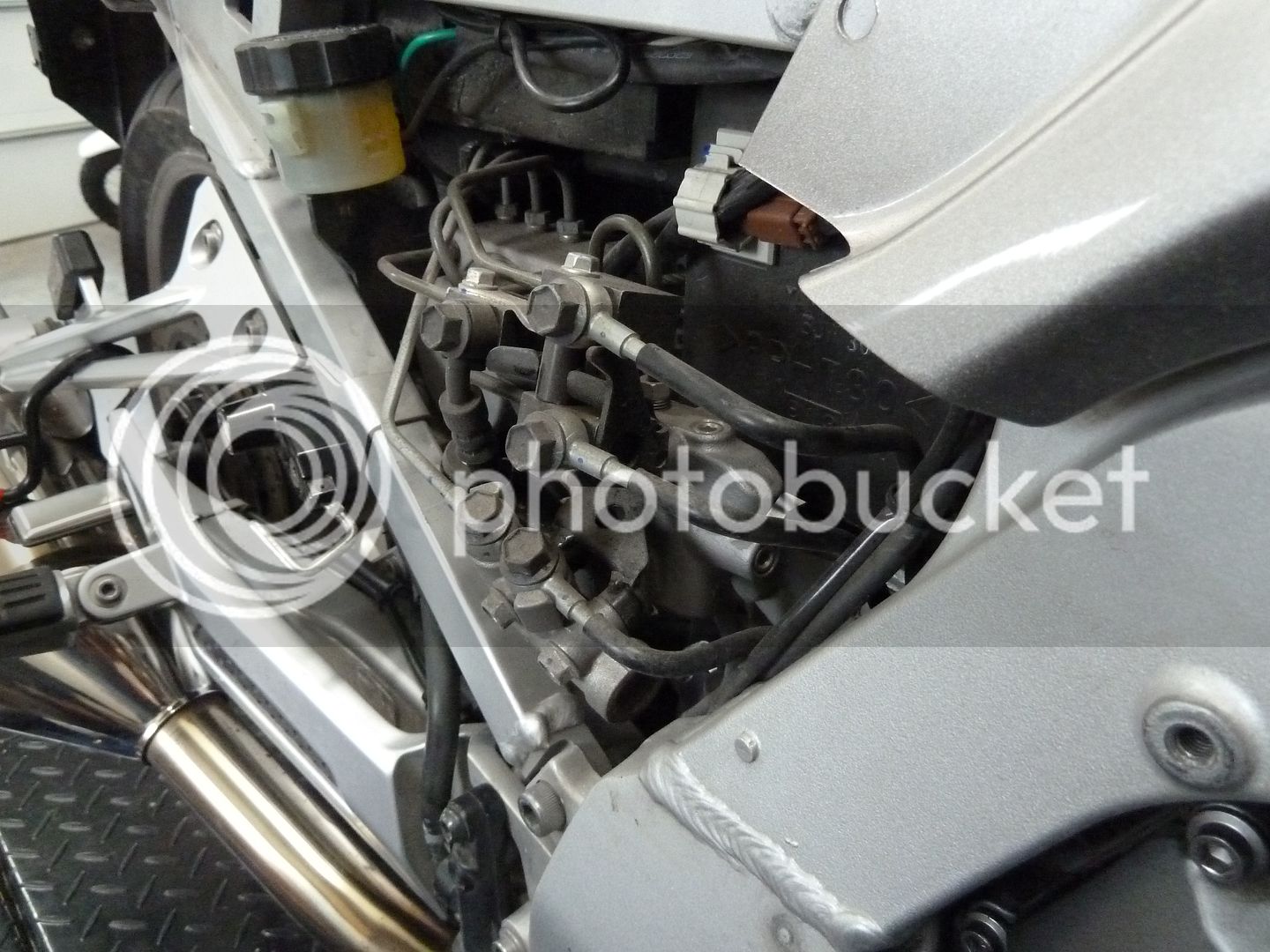I have more questions for the techies since I have questioned whether my rear ABS is working......... I have gone too hot approaching a curve and have applied rear brake to scrub off a bit of speed (with perhaps no or a little front braking) on dry pavement or damp, and the rear wheel locks up with no pulsing felt. Rear tire can slide for a fair distance....... might have something to do with perhaps a weight shift forward, as it has happened on downhill slopes (and also wondering if the big fat car tire might contribute due to the large surface area, but that's a whole other discussion). In these cases, speed was I'm guessing 30-50 mph, which should be well above where the ABS should kick in.
ABS low speed shut-off happens between 7-8 mph, at that point there is too little inertia in the chassis. There are a lot of dynamics taking place in your description. Was the slide linear (upright and straight forward) or radial (leaned over in a turn)? The FJR ABS is effective only in linear wheel speed control.
I have not run the jumper diagnostic test yet, however this past weekend I purposely tested the rear ABS while on damp pavement. At 35 mph, rear brake only, I could get two significant pulses in the pedal (audible click as well) until I slowed what I think would be below the ABS cutoff speed. Three tests, same thing. Pulses/clicks were quite distinct and I'm guessing a frequency of 2-3 per second. I was expecting perhaps double or triple that. Tested the front in a similar manner and pulses were indeed a much higher frequency that I expected. So my conclusion is the ABS is working sorta, but how should it work........ no official technical info seems to exist. Could it be if my test speed were higher, would the rear pulse much more rapidly?
The ABS ECU monitors many things but the prime inputs are wheel speed and vehicle chassis speed. When wheel speed and chassis speed are equal the ratio is 1:1 and slip angle is 100%. As wheel speed and chassis speed start to become divergent, wheel lockup becomes imminent. When the wheel speed to chassis speed is not equal the chassis remains 1 but the wheel becomes :0.90 1:.90 and slip angle is 90%. The critical point arrives at a slip angle of 87%, this is considered to be the transition to skid -- at 89% the wheel is turning and not skidding, at 85% the wheel is effectively skidding and on the way to locking up. The ABS ECU will start to modulate the hydraulic pressure to keep the slip angle higher than 87%. There is no one set reaction from the ABS unit, it will vary with the ratio of chassis to wheel speed.
Elsewhere in this thread, the metering valve has been mentioned. This is a separate component from the ABS pump assembly and a new one costs ~$175. Does anyone know what this thing does? It does not appear to have any electrical connections, just mechano-hydraulic internals...... is this the one that gets "stuck"? Has anybody replaced one and that fixed your issue? I want your old one for surgery........... There is also a proportioning valve, but that typically just balances the amount of braking front to rear. So, do I replace the metering valve?
I don't have a FSM with me today so the 'metering valve' is a bit of a mystery. I do know about the proportioning valve in the linked braking system and you are correct about that. At least on the Gen I there is no external metering valve and all stuck solenoids have been internal to the metering block. Because the Gen I brakes are not linked a proportioning valve is not needed.
For those who have physically tested or encountered the rear ABS to kick in (rear brake applied only or mostly), how fast do the pulses come, fast buzz or slow and deliberate? How about fatsiders with a larger diameter rear tire?
During the ABS jumper test the pulse rate is described in the FSM. If you are talking about on the road, it will vary depending on how hard the ABS ECU needs to work to keep the slip angle under control. In terms of tire size, by the book, the coefficient of friction is independent of surface area but real world dynamics can cause contact surface area and force to vary during braking. Grab a handful of front brake and the weight load on the rear tire can drop to 15% of vehicle weight as the weight transfers to the front wheel. Weight transfer will cause different reactions from the ABS ECU depending if the braking is biased primarily on the rear brake or biased primarily on the front brake.
I am not going to be able to complete my diagnosis before next spring (many reasons), but future testing will include the jumper test, plus a physical test with an OEM size 180 rear tire, then perhaps a fatside tire. I have done regular flush and bleeds. I also question whether fluid is really being moved during the jumper test..... it's a closed system, where's it going to go?
Brake fluid is recirculated as the ABS pump runs and the accumulator and spool valves are cycled. Over a series of cycles the accumulator and spools will be flushed of old fluid, and whatever was in these cavities will now be in the brake lines.
Anyway, seeking the collective wisdom here, hoping we'll all learn more. BTW, I did score a spare low mileage ABS pump on ebay, which I was originally thinking I would swap out. That was before my road test.... but, maybe I'll go to all that work at some point next year.
The unknown on the bench vs the known in your FJR -- you've gotta ask yourself a question: "Do I feel lucky?" Well, do ya, punk?"





















































